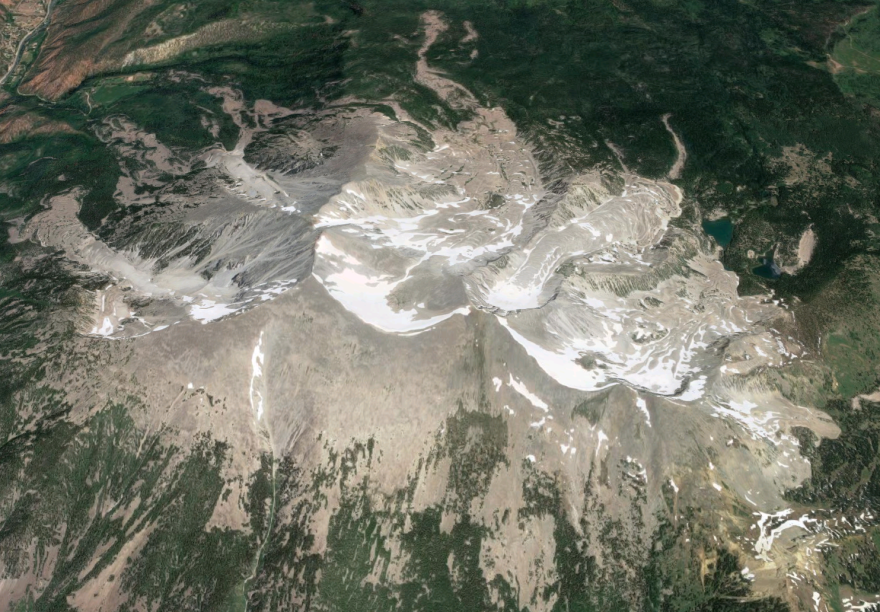Aspen Public Radio’s reporting project Rocky Mountain Why? starts with what you’re curious about when it comes to life in the Roaring Fork Valley. You submit questions, then our news team does the digging and shares the answers with our community.
Listener Esmeralda Osorio asked, “Is Mount Sopris a volcano or not?”
Mt. Sopris, a 12,965 foot snow-capped mountain, looms over Carbondale. It’s an icon in the Roaring Fork Valley. From some angles, it may look like a volcano, but experts say it’s pretty clear that it’s not.
“If you looked at Mt. Sopris, and picked up a piece of the rock, you would know instantly that it was not a volcanic rock,” said Bruce Bartleson, professor emeritus of geology at Western Colorado University.
Bartleson spent more than three decades teaching geology in Gunnison. He did his doctoral thesis on the Elk Mountains, the range that contains Sopris. And he was very quick to answer the question. It is definitely not a volcano.
“It's what geologists call a stock,” Bartleson said. “That is an intrusive igneous body with an exposure of less than 40 square miles, which has a discordant relationship with the rocks that it intrudes.”

Stocks start with a big blob of magma beneath the surface – rock that’s so hot it’s turned into a liquid. With a tremendous amount of pressure, it starts pushing up. If it breaches the surface and spills out into the air, that’s a volcano. Or in the case of a stock like Sopris, it stops short.
“It cools somehow. It can't push its way all the way to the surface,” Bartleson said. “And it gets stuck several miles below the surface.”
In the case of Sopris, that’s about two or three miles below. Then, over about 10 million years, erosion from weather and glaciers helped give it shape. That’s actually the same way a few other notable peaks such as Capitol Peak and Snowmass Peak formed.
A tour on Google Maps reveals the reason why some people might think Mt. Sopris is a volcano.
There are four big bowl-shaped valleys on the north side of the mountain. Bartleson said they’re called “cirques,” which are carved out by glaciers.

So if you get a glimpse of one of those bowls from the right angle, it could look like a volcanic crater, even if it’s just a regular mountain.
If you want to see an actual volcanic crater, there’s one just down the road from Mt. Sopris.
“Dotsero is entirely volcanic,” said Peter Lipman, who spent his career studying volcanoes with the U.S. Geological Survey in Colorado and the West. “It’s a lava called Basalt, generally the same kind of lava that erupts in Hawaii today.”
Dotsero is technically listed as Colorado’s only active volcano because it erupted less than 10,000 years ago. To geologists, who often deal in millions of years, that makes it a pretty young volcano, but Lipman said it’s not likely to erupt again.
“Usually Basaltic volcanoes like that are one shot events,” Lipman said.
So, Sopris is not a volcano, and the one in Dotsero probably won’t be doing anything exciting any time soon. But that doesn’t mean that the roiling, molten earth stored deep beneath the ground is too far away. There’s actually a great reminder that there’s a ton of hot rock deep beneath your feet in the Roaring Fork Valley.
“The hot springs are a direct result of groundwater running into still cooling magma down at depth,” Bartleson said. “So yeah, there’s still something going on.”
So next time you take a dip in Glenwood Springs, you can think of it as more than just a relaxing soak. It’s a reminder of the forces that made Colorado millions of years ago.






